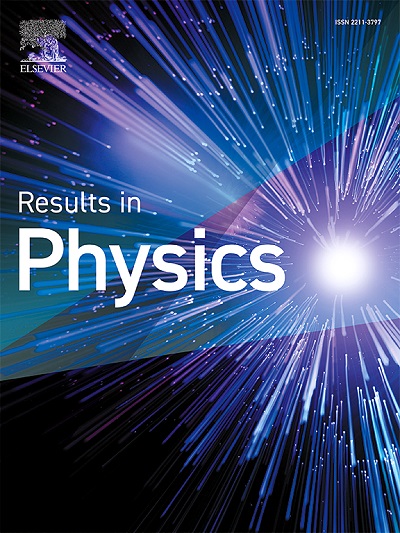Optimizing mechanical entanglement using squeezing and parametric amplification
IF 4.6
2区 物理与天体物理
Q2 MATERIALS SCIENCE, MULTIDISCIPLINARY
引用次数: 0
Abstract
We propose a scheme of an optomechanical system that optimizes entanglement in nanomechanical resonators through quantum state transfer of intracavity squeezing and squeezed reservoir field sources assisted by radiation pressure. The system is driven by red-detuned laser fields, which enable simultaneous cooling of the mechanical resonators and facilitate the quantum state transfer in a weak coupling and good cavity limit. Specifically, the mechanical entanglement is quantified using logarithmic negativity within the bipartite Gaussian states of the two mechanical modes. The results show that several key parameters, including the parametric phase and nonlinear gain of the non-degenerate optical parametric amplifier, the strength of the squeezing reservoir, optomechanical cooperativity, thermal excitation of phonons, and the temperature of mechanical baths, strongly influence the degree of mechanical entanglement. Hence, the findings indicate that careful tuning of the parameters can enable control over the enhancement of entanglement robustness, suggesting that this optomechanical scheme provides a viable pathway for applications in quantum sensing and information processing
利用挤压和参数放大优化机械缠结
我们提出了一种光力学系统方案,该方案通过在辐射压力的辅助下,通过腔内压缩和压缩储层场源的量子态转移来优化纳米机械谐振器中的纠缠。该系统由红失谐激光场驱动,实现了机械谐振腔的同步冷却,促进了弱耦合和良好腔限下的量子态转移。具体地说,在两种力学模式的二部高斯态中使用对数负性来量化机械纠缠。结果表明,非简并光参量放大器的参数相位和非线性增益、压缩库的强度、光力学协同性、声子的热激发和机械槽的温度等关键参数对机械纠缠度有很大影响。因此,研究结果表明,仔细调整参数可以控制纠缠鲁棒性的增强,这表明这种光力学方案为量子传感和信息处理中的应用提供了一条可行的途径
本文章由计算机程序翻译,如有差异,请以英文原文为准。
求助全文
约1分钟内获得全文
求助全文
来源期刊

Results in Physics
MATERIALS SCIENCE, MULTIDISCIPLINARYPHYSIC-PHYSICS, MULTIDISCIPLINARY
CiteScore
8.70
自引率
9.40%
发文量
754
审稿时长
50 days
期刊介绍:
Results in Physics is an open access journal offering authors the opportunity to publish in all fundamental and interdisciplinary areas of physics, materials science, and applied physics. Papers of a theoretical, computational, and experimental nature are all welcome. Results in Physics accepts papers that are scientifically sound, technically correct and provide valuable new knowledge to the physics community. Topics such as three-dimensional flow and magnetohydrodynamics are not within the scope of Results in Physics.
Results in Physics welcomes three types of papers:
1. Full research papers
2. Microarticles: very short papers, no longer than two pages. They may consist of a single, but well-described piece of information, such as:
- Data and/or a plot plus a description
- Description of a new method or instrumentation
- Negative results
- Concept or design study
3. Letters to the Editor: Letters discussing a recent article published in Results in Physics are welcome. These are objective, constructive, or educational critiques of papers published in Results in Physics. Accepted letters will be sent to the author of the original paper for a response. Each letter and response is published together. Letters should be received within 8 weeks of the article''s publication. They should not exceed 750 words of text and 10 references.
 求助内容:
求助内容: 应助结果提醒方式:
应助结果提醒方式:


